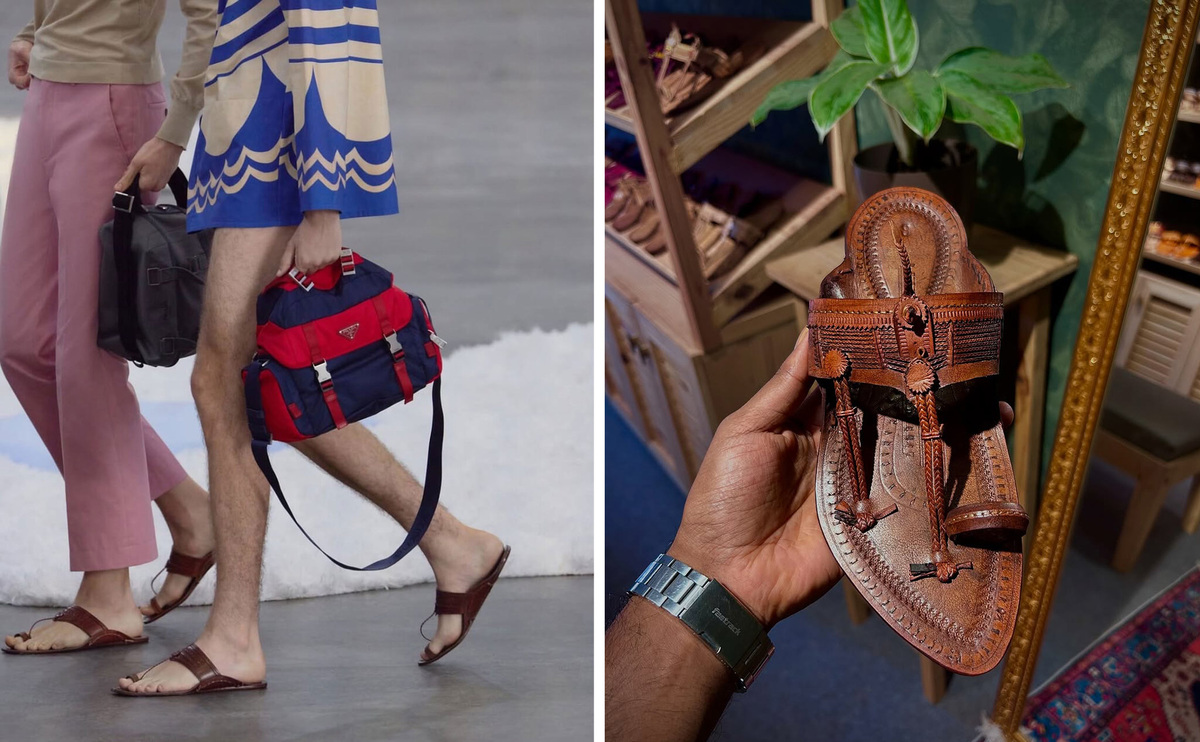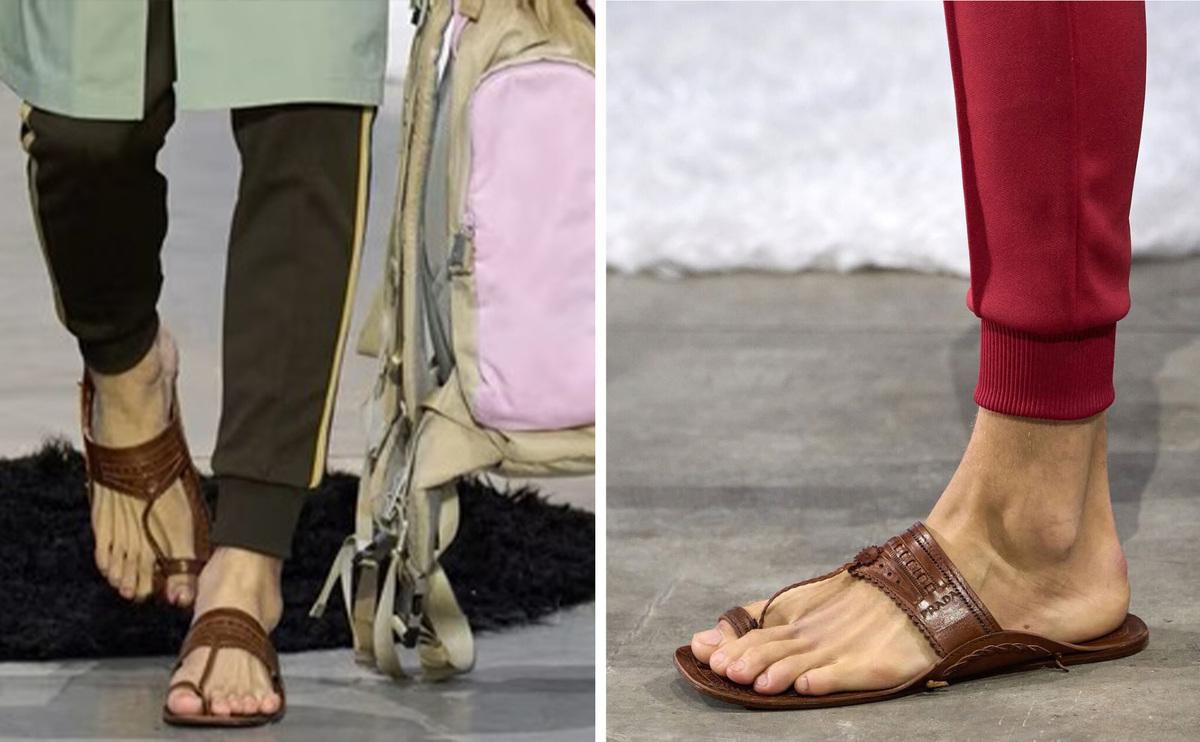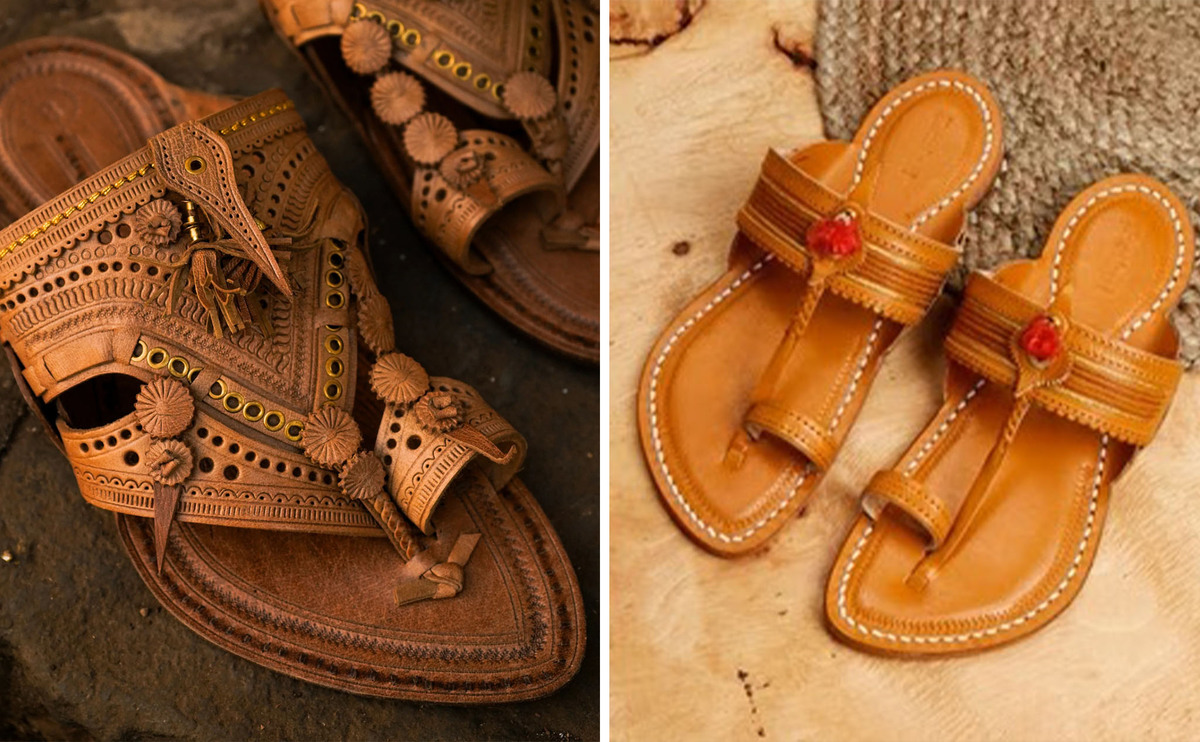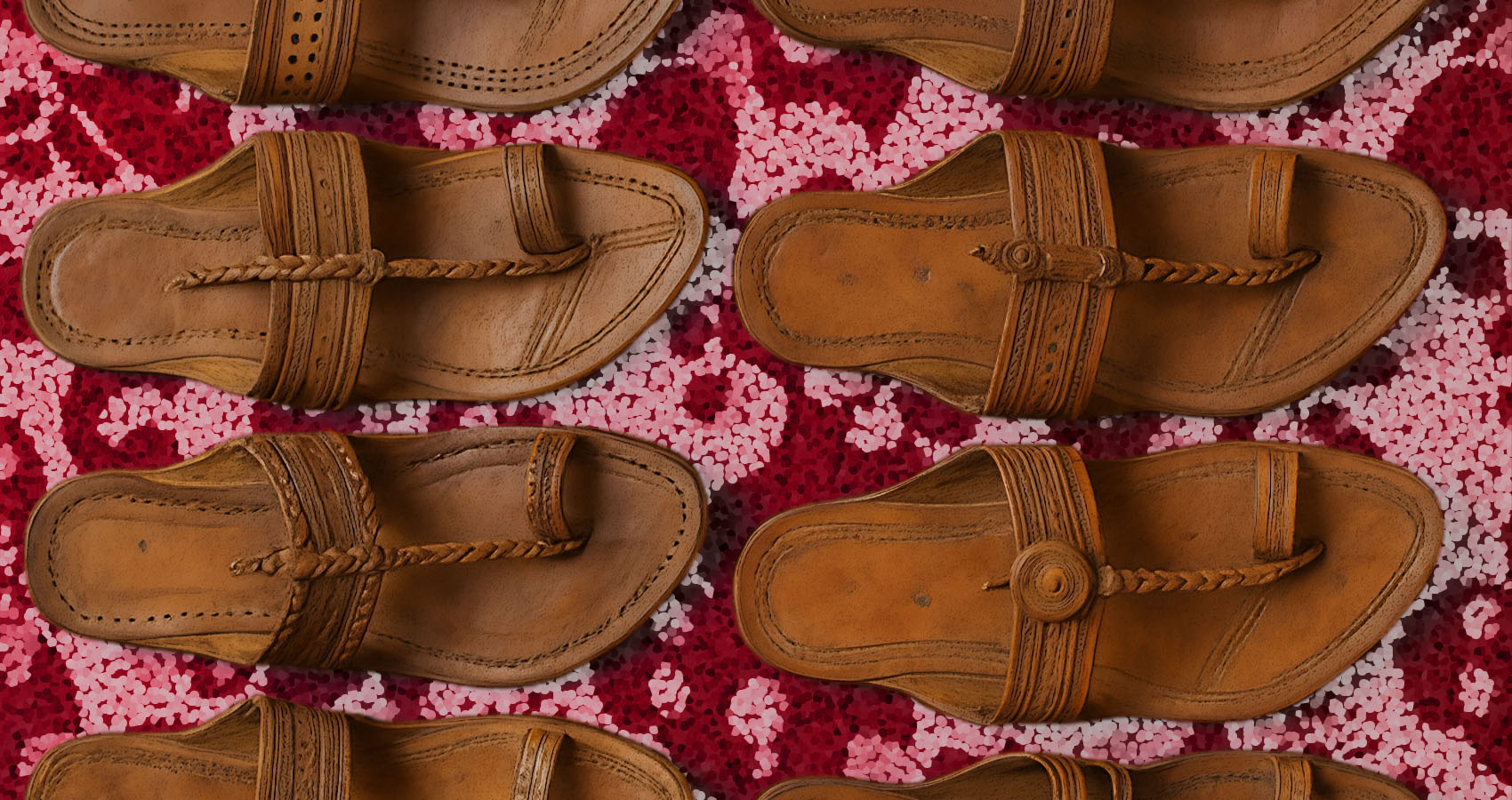The Westernisation Of The Kolhapuri Chappal Sandal
And other instances of brand cultural appropriation.
Kolhapur, a city in South Maharashtra, is notable for its rich history as a central hub of the Shilahara dynasty, its opulent architecture, and its spirit of entrepreneurship. It is also the birthplace of the famous buffalo leather slippers known as Kolhapuri chappals, first worn in the 13th century. In 2019, these sandals received a geographical indication (GI) tag from the CGPDTM, certifying that they are made according to traditional methods. Other famous GI-tagged items include Champagne and Feta cheese.
Economic Importance and Challenges

Beyond its cultural significance, the sandal has long played a vital role in the regional economy. In 2020, the business market was estimated at roughly ₹90,000,000, employing over 10,000 artisans. However, the design has been increasingly minimised to meet the demand for cheaper exports. More recently, the business has begun to struggle with irregular leather supplies, environmental regulations on tanneries, cow slaughter ban, and the creation of duplicates and fakes.
The chappals have received significant moments of international visibility – in the 1970s, the sandals became popular in the United States with the hippie movement. More recently, these returned as ‘toe ring’ sandals, especially from the French brand CHAPPAL who exports them, making them more feminine to market to their buyers.

The global spotlight turned controversial
The global interest became controversial when Prada released some familiar-looking, inconspicuous ‘leather sandals’ as a part of their 2026 Spring-Summer Men’s collection. The omission of the Indian origins of the obvious Kolhapuri chappals created backlash for cultural appropriation, leading to criticism from Indian fashion circles. Traditional artisans in Maharashtra cited a violation of the aforementioned GI tag, and MACCIA released a formal complaint, prompting Prada to acknowledge the sandal’s Indian inspiration. They expressed commitment to ethical design and opened the door to collaboration with local artisans, finally affording the sandals the cultural recognition they deserve. A PIL has been filed in the Bombay High Court seeking compensation for Kolhapuri artisans. This includes a formal public apology, damages, and stricter protection for GI-tagged products.
A Broader Pattern of Cultural Appropriation in Fashion
The Kolhapuri case is far from isolated. The unacknowledged use and repurposing of culturally significant clothing by brands is an ongoing issue. However, rising public awareness of cultural appropriation, aided by social media, means brands are increasingly held accountable.
Recent Cases of Cultural Appropriation
The Russian fashion label Yaka recently faced accusations of cultural appropriation for using traditional patterns from Kyrgyzstan. While the brand's founder, Anna Obydenova, initially dismissed the online criticism, she later claimed her label had collaborated with Kyrgyz craftswomen.
In 2024, villagers in Vaideeni, Romania, accused Louis Vuitton of appropriating their traditional blouse. While Andrea Tanasescu, founder of the La Blouse Roumaine online community, acknowledged that everything in fashion is inspiration, she asserted the importance of cultural heritage and expression. Louis Vuitton acknowledged, apologised, and withdrew the pieces.

Two years prior, Ralph Lauren was accused of plagiarizing Indigenous designs by the head of a cultural affairs commission in Mexico. Beatriz Gutierrez captioned an Instagram post of the jacket: “…by copying these designs you're committing plagiarism (…) hopefully you will compensate the original communities (Contla and Saltillo peoples) that do this work with love and not for a million-dollar profit.” The brand issued an apology soon after, pledging to follow a model of credit and collaboration for all future products using Indigenous designs.
Inspiration vs. Appropriation: The Need for Respect and Collaboration
In the cases of Kolhapuri chappals, Kyrgyz textiles, and Indigenous Mexican designs that there is a pattern in which inspiration too often blurs into appropriation. Ultimately, respect lies in acknowledgment, collaboration, and equal benefit-sharing with communities of provenance. As global consumers grow more culturally conscious, it becomes imperative for fashion houses not just to apologise after the fact, but to proactively uphold ethical standards.












